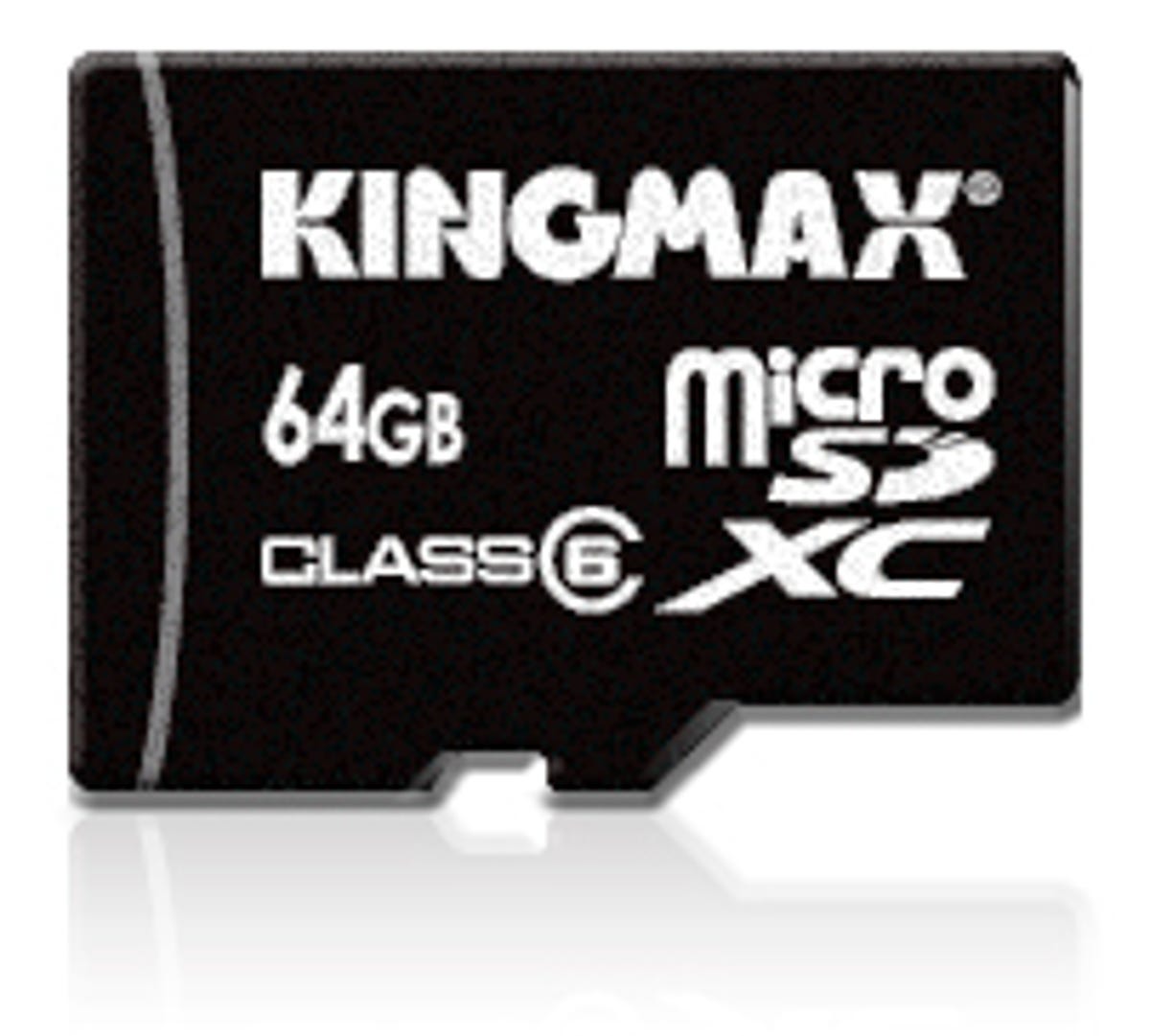One of the things that many Google Android users like about their devices over the iPhone is the fact that most Android devices allow you to add additional storage capacity. The iPhone doesn’t.

But figuring out how and where to store apps, music, photos, video and games isn’t as easy as it sounds. In this Ask Maggie I explain how it works.
How much storage can I add?
Dear Maggie,
I see in many of the phone reviews on CNET that you can expand your smartphone’s memory up to 32GB or up to 64GB using a microSD card. For example, in the review for the Samsung Galaxy S III, the review notes, “the handset will come in three storage capacities: 16GB, 32GB, and 64GB (this latter size won’t be immediately available). In addition, it has a microSD card slot for up to another 64GB of storage.”
I’m pretty sure I’ve seen microSD card sizes of up to 128GB. Is it possible to use these types of cards in your phone? Basically, what I’m wondering is if you can plug in any microSD card into any phone or if there are software or hardware limitations that vary by manufacturer or model. Also, how easy is it to manage content on microSD expansion cards?
Thanks!
Neal
Dear Neal,
This a great question. I’ve been getting a few questions lately about microSD cards. And it makes sense given the growing number of Google Android smartphones released recently that have additional memory capability.


Kingmax
The short answer to your question is that there is a limit to the amount of memory a particular phone can handle. MicroSD cards come in a variety of flavors. And if your device isn’t able to handle a particular flavor of storage technology, it won’t accept higher capacity cards. Standard SD cards max out at a storage capacity of 2GB.
As you mentioned in your question, most smartphones today support the Micro Secure Digital High Capacity or SDHC flavor of the technology. Cards using this technology can hold between 4GB and 32GB of data. So that’s why most new smartphones can hold up to 32GB.
The largest class of data is the SDXC or Secure Digital Extended Capacity, which can hold between 64GB and 2TB of data. But even devices that can now support 64GB cards may not support some of the very high capacity cards. For example, Samsung says the new Galaxy S III can handle up to 64GB of additional storage.
The good thing about memory cards is that they give you the option to store more photos, videos, music and apps on your device than if you relied solely on the phone’s internal memory. Another advantage is that the cards can be popped in and out so that you can take your media with you to another device. And lastly, if you have a lot apps installed on your phone, moving some of them to the SD card can actually improve the performance of your phone.
Confusion abounds
But managing this extra storage and figuring out what should be stored where can be confusing. The first thing that’s tricky is the way the storage options are listed on the device. Storage variously shows up as SD card storage, USB storage and Device Memory. The USB storage and Device Memory are internal to the device. The USB storage is a partition of the internal hard drive where the user can keep his files. So on a device like the Samsung Galaxy SII, this is where the 16GB of storage is that the device comes with.
Related stories
- Samsung Galaxy S III (Review)
- Kingmax MicroSD card hits 64GB mark
- SanDisk unveils tiny cards with big storage
When you download apps or other media to your phone or save pictures, it’s automatically stored here. The Device Memory is what’s used primarily to run the OS and other core functionality on the device.
You can see how much storage you have available by going to the settings on your phone and looking under the storage tab.
If you run out of the USB storage, you can add additional storage via a microSD card. But another confusing element is that not all apps can be stored on microSD cards.
In general, apps that either offer core functionality built into Android or that a carrier bundles with the phone cannot be moved to a microSD. Unless you root your phone, you don’t have permission to access these folders. Apps that you have to pay for are also generally restricted. And you cannot save them to a microSD, because app developers don’t want you distributing the app to another user via your microSD.
By contrast, free apps are typically stored in user accessible folders, although this is not the case for all. If the folders are accessible, you can store them on a microSD.
The lovely Samsung Galaxy S III (photos)






Of course these are generalizations, and there can be exceptions.
If the apps can be stored on an SD card, then it’s pretty easy to move the files. Simply go into the settings and manage your apps.
Aside from apps, microSD is also great for storing your personal music, photos, and videos. You can do this by syncing your device with your computer and “mounting” the microSD card to your computer. (Basically, you just connect your phone to the computer with a USB cable; sometimes it can be done wirelessly.) Then just drag and drop your media onto the microsSD card, just like you would with any other external storage devices.
Pictures, music and especially video can take up lots of memory, so this may be the best way for you to maximize your device storage while saving yourself the headache of trying to manage apps are stored on a microSD. And because you can pop out the microSD card, you can take all that media with you if you switch phones without having to redownload it.
I hope this explanation was helpful.
Using a microSD to store iTunes music
Dear Maggie,
Can I store my iTunes music on a microSD and listen to that music on my Android smartphone? If so, how?
Thanks,
Franny
Dear Franny,
I’ve got some good news for you. The answer is yes, you can store unencrypted music from iTunes on a microSD card. The iPhone doesn’t have an expandable memory slot to increase the storage. But you can move some, if not all of your music from iTunes onto a microSD, which can be used on a device like an Android smartphone.


Apple
What you’ll need to do this is a microSD card that is compatible with your smartphone and a microSD reader. Some newer computers come with this built in, but you can also buy an external one and connect it to your computer via a USB cable.
On your computer go to the music folder containing iTunes. Select the tracks you want to store on the microSD. Once you’ve attached your microSD reader to your computer and inserted the card, the microSD flash drive should show up on your computer as an available drive.
And then you just drag and drop the music you want to store onto the microSD. The music will copy into a file on the microSD. Then you can put that card into your Android phone. You should see the copied files on the device. If you have a music player on your phone, your songs will most likely be found there. You can also look directly on the SD card to find your music as well.
The only catch is that some music may not be able to be copied. If the music was bought through iTunes and is still encrypted, then it can’t be copied elsewhere. But songs that you have ripped from your own CDs or unencrypted music acquired through iTunes or somewhere else will transfer.
This dragging and dropping method works for copying all your own media, such as photos and videos you have stored on your computer. But remember, the content has to be encryption-free in order to be copied.
I hope this explanation was helpful. Good luck!
Ask Maggie is an advice column that answers readers’ wireless and broadband questions. The column now appears twice a week on CNET offering readers a double dosage of Ask Maggie’s advice. If you have a question, I’d love to hear from you. Please send me an e-mail at maggie dot reardon at cbs dot com. And please put “Ask Maggie” in the subject header. You can also follow me on Facebook on my Ask Maggie page.



